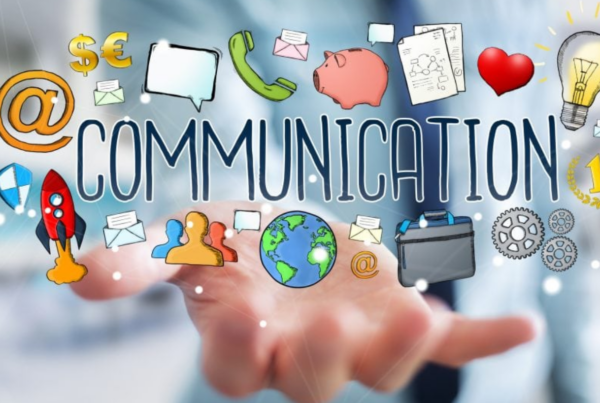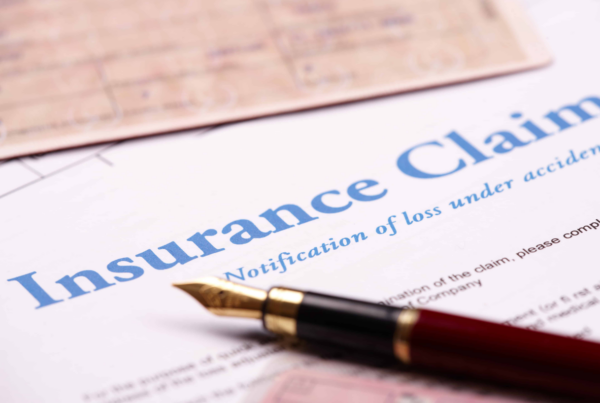
Picture this: It’s 2022. Your inbox lights up with a new email requesting your signature on a statement of work. You click the attached file, ready to electronically sign the document and get back to being productive. Then, you’re met with this:

There’s no blue link, no Click Here to Sign, only a sad blank line asking you to jump through hoops just to signify your agreement.
If this sounds like an inconvenience for you, it’s a potential deal-breaker for your customers. Electronic signatures are now ubiquitous in the business world. Those who still don’t embrace them stand out from the crowd (and not in a good way).
Luckily, it’s never too late to get in on the e-sign game. If you are using Salesforce, it’s actually easier than ever to integrate an e-signature solution into your workflows - you just have to know what to look for.
Whether you’ve been considering using e-signatures for a while or are just starting to read up on the benefits, this is the guide for you. We’ll go over the main benefits of e-signatures, the different types, their legality, and what to look for in a perfect solution. Read on to turn this list:

Into a solution that helps your business exceed your customers’ expectations.
The Main Benefits of E-Signature for Salesforce
Before we get into the what, let’s start with the why: why should you consider implementing e-signature software for Salesforce in the first place? What’s in it for you?
We’re glad you asked! Businesses that use e-signature apps see countless benefits, but there are four that we’ve pinpointed as our favorite:
- E-Signatures deliver better customer experiences, which can translate to higher customer loyalty, lower churn rates, and increased revenue.
- E-Signatures deliver better employee experiences. With the headache of tracking and storing documents wiped away, productivity shoots upwards. In addition, deals can close faster and you can get paid quicker.
- E-Signatures are more secure, meaning your risk of breached contracts or data leaks is significantly reduced, keeping your legal team happy.
- E-Signatures are extremely cost-effective, saving you money through less wasted time, increased productivity, and getting to closed-won faster.
These four main benefits can help any business build a case for implementing an e-signature solution into their Salesforce workflows, but if you’re not convinced yet, check out the top 10 things an e-signature solution for Salesforce can do for you.
Types of E-Signatures
Now that the potential impact of an e-signature solution is clear, you should be aware of the different types of e-signatures themselves. The type that you require could affect which solutions you evaluate.
The two main types of e-signatures are electronic signatures and digital signatures. Although they sound similar, they have important differences.
- Electronic signatures are generally recognized as any sound, symbol, or process that shows the intent to sign something. This could range from a simple checkbox to an electronically drawn signature backed up by an audit trail and two-factor authentication.
- Digital signatures are a form of electronic signature that ensures the identity of a signer is valid and the document hasn’t been modified since it was signed, using Public Key Infrastructure (PKI) encryption. Click here to find out more about digital signatures.

Both types of e-signatures are considered valid by most major laws and directives worldwide. The type that you choose to use depends on your organization’s security requirements.
E-Signature Legality
The final thing to consider before diving into the AppExchange in search of a great Salesforce e-signature app is legality. What’s the legal status of e-signatures in your location?
Luckily, e-signatures carry the same authority as wet-ink signatures in most countries around the world. Take a look at a few major laws governing electronic signatures worldwide:
- United States: The ESIGN Act specifies that signatures cannot be denied validity or enforceability because they are electronic.
- Canada: The PIPEDA Act establishes that electronic signatures and documents have the same legal authority as paper documents.
- European Union: The eIDAS regulation defines three types of electronic signatures and when they are acceptable to use. The most basic type, Standard Electronic Signatures, are generally acceptable in most business transactions.
Although electronic signatures are generally recognizable around the globe, exceptions exist. Be sure to consult with your legal team before deciding upon implementing them into your workflows.
You Might Also Like: 5 Security and Compliance Benefits of Salesforce Document Automation
What Should You Look For in an E-Signature Solution for Salesforce?
After you’ve built a rock-solid business case for e-signatures and established their legality for the agreements your business uses, it’s time to do some shopping.
As you navigate the AppExchange in search of the perfect Salesforce e-signature app, look out for solutions with a few of these key features.
Seamless Integration Into Existing Workflows
E-Signature applications are supposed to make your life easier, not harder. If you’ve already set up workflows in Salesforce, choosing a solution that (1) doesn’t take you outside of Salesforce and (2) allows you to maintain the same general flow of work will ensure a smooth setup and minimal hiccups in the future.
Quick tip: look for native e-signature applications like S-Sign first. Since they’re built on the Salesforce platform, native applications blend more easily into your existing processes and mirror the Salesforce UI. If you’re using products like Salesforce CPQ & Billing, for example, a native application can fit into your process right away with minimal configuration.
Document Generation Capabilities
E-signatures are great, but they’re only one component of a much larger workflow. Why save time on the signature collection process if it still takes hours to pull together the documents that need to be signed?
The best e-signature solutions for Salesforce include document generation capabilities that allow you to create agreements with one click. These solutions save you time by compiling your Salesforce data into premade templates that already have signature tags mapped out.
Instead of switching between different apps or copy-pasting information, everything you need to succeed will be bundled into one solution - making creating, sending, tracking, and storing agreements much easier.
You Might Also Like: Upgrading Your Document Generation System? Here's What You Need to Know
Security Features
Legal issues aren’t fun or cheap, so this one’s a no-brainer: your Salesforce e-signature integration should have rock-solid security. While it might be tempting to look for a digital vs standard electronic signature solution and call it a day, there’s more to consider than that. Look for a solution that includes:
- A detailed audit trail with information like signer names, IP addresses, and an event log that captures acts like document opens, signature submissions, and date/time stamps.

- Two-Factor Authentication options that require signers to prove their identities. This might take the form of an emailed code required to view the document.
- Document encryption options for enhanced security.
- No third-party site authorization requirements that send data outside of Salesforce. When you use an e-signature app hosted on an external server, you open up the surface area for data breaches (not to mention add more work for your IT security team that needs to evaluate the solution’s architecture). Here again, native apps can be of assistance: since they’re built on the Salesforce platform, the entire e-signature process takes place on Salesforce servers (which you’ve already evaluated and approved).
You Might Also Like: How to Evaluate the Security of AppExchange Apps
Multiple Input Field Types
When you sign a paper document, you might also need to sign your initials, write a date, or check a few boxes too. The e-signature solution that you choose should let your customers do the same thing.
Choose an app that lets you collect multiple types of data from your customers in addition to signatures, such as initials, dates, checkboxes, and freeform text. Not only will this give you maximum flexibility, but it might even spark ideas about using the app for more than just signature collection workflows.
Write Back to Salesforce
More field input options means more opportunities to collect valuable data - but more data usually means more data entry. However, if you choose an e-signature solution that writes data back to Salesforce, this task will be taken care of for you.
Let’s say your document requests a customer to enter their department and company name. Using an e-signature solution that writes back to Salesforce, you could map these fields from your document to a Salesforce record. That way, your data will always be up to date.

Dynamic Content
Agreements never follow a “one size fits all” approach. Customers in different industries or different locations may require different clauses or components be included before they’re able to sign. Rather than maintain a library of hundreds of variations of a single document, you should look for an e-signature solution that supports dynamic content. That way, you can configure a single document template to include or exclude sections based on your own business rules.
Apps like S-Sign even let you dynamically include or exclude entire signer profiles conditionally for even greater flexibility.
You Might Also Like: [Datasheet] Native Salesforce App Architecture and Benefits
Automatic Reminders
Nobody likes waiting days for a signature. The Salesforce e-signature app that you choose should offer automatic reminders to keep your deals on track. These also function to create urgency and get your documents signed faster.
Mobile Support
With “Sent from my iPhone” becoming an omnipresent email signature in the business world, you need to be prepared for customers that engage with you on mobile devices. The e-signature solution that you choose should look and feel great on a phone or tablet.
Automation Options
Like we said earlier in this article: e-signature solutions are supposed to make your life (and your customers’ lives) easier. If you have agreement workflows that are consistent and repetitive (always sending an MSA when an opportunity reaches a certain stage, for example), automating these processes allows you to stay on track while your agreements are sent in the background.
E-signature apps that allow you to automate your workflows are also in the best position to scale with your business. As your processes grow more complex, automation will be necessary to maintain an efficient team and keep customers happy.
Choose Native E-Signature Solutions for Salesforce
Our last piece of advice: go native. Native e-signature solutions for Salesforce offer all of the benefits listed above - and they’re built on the platform that you use everyday.
You’ve already invested in Salesforce, approved its security infrastructure, and integrated your business processes. Why choose an app that sends your data off-platform?
Native Salesforce e-signature apps are:
- Faster, since they process all data within your Salesforce environment.
- More secure, since they never send your data or documents outside of Salesforce.
- Easier to use, since they fit into your workflows naturally and mirror the Salesforce interface.
Native apps help you work faster, stay compliant, and deliver exceptional customer experiences. Look for the Native App tile under the Features section as you browse AppExchange listings.

As always, be sure to consult with your legal team before making any decisions about which app is best for you.
S-Docs: 100% Native Document Generation & E-Signature for Salesforce
If you’re ready to start automating your agreement workflows and closing deals faster with a solution built exclusively for Salesforce, look no further than S-Docs and S-Sign. Create, send, e-sign, track, and store documents in Salesforce. S-Docs lets you skyrocket productivity without worrying about compliance or downtime, since it’s built on the platform you’ve already approved.
Get started today with a customized demo - we’re one click away. Request a demo today or contact sales@sdocs.com to find out what S-Docs and S-Sign can do to help your business excel.
Enjoying our blog?
Subscribe now and we'll make sure to send you the latest as we publish new content!
Connect With Us!
For Salesforce news, digital document & e-signature insights, or just for fun.
Read More


